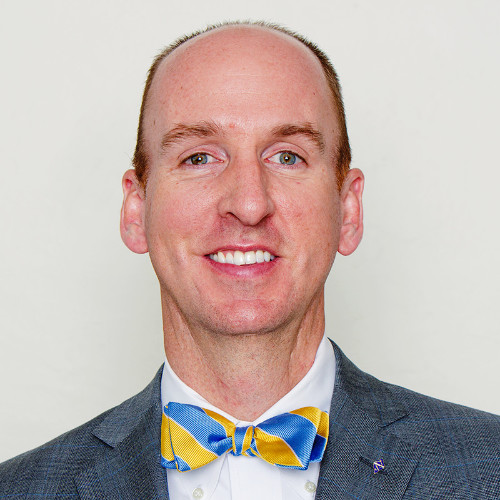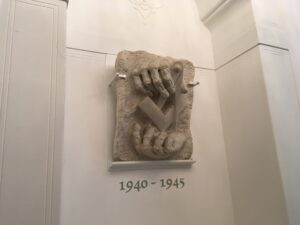The (Many) Role(s) of Ritual
Our Greatest Treasure should be our Greatest Tool… in many ways.
District Deputy Grand Lecturer
District 2

All of the opinions contained herein are my own and do not reflect the views of the Grand Lodge of New Mexico
Ritual work in the Second Masonic District has been quite up-to-par and I’ve been impressed by the quality of the work that is being performed during openings and closings and degree conferrals; that is to say that our Masons know what to do and they know how to do it. New candidates are being made into Entered Apprentice Masons and some are even progressing to the following degrees. The lectures are a challenge in District 2, as are the charges, gavel lectures, and Bible presentation, and I continue to encourage every Mason to learn the lectures for the degrees as that will help bring a Mason to a fuller understanding of our symbolism and teachings. There is no hack or shortcut to memorize the ritual work, it just takes time and diligent application, but once you commit the work to memory you will gain the knowledge to further instruct new Masons and carry on the traditions of our fraternity.
The effects of Covid are still being felt in District 2 and the circumstances of life have caused many Masons to move elsewhere, lose interest in the fraternity, or find another outlet for their civic engagements. The same Masons who were present and participating in their lodges before Covid are the same ones who are still present and participating in degrees, in the roles as officers, and in the lodge charity efforts. But in this lecturer’s experience there is a distinct difference in the ritual and the character of the lodges; there is certainly a marked departure in the quality of candidate who has petitioned the lodges.
We’ve also been receiving a significant number of visitors and petitioners for affiliation or plural membership from out-of-state Masons, particularly from Texas and California, and others from New Jersey and Illinois. I don’t know how that will translate into ritual proficiency or increased participation in degrees and officers’ roles, but having assistance from out-of-state Masons who are willing and able to learn our ritual might just be the jolt District 2 needs to re-energize its lodges.
I can’t provide a set of numbers of degrees conferred or ritual sections returned for the reader to review because I’m going to stray from the doctrinaire and venture into philosophy for this lecturer’s report.

Wikimedia Commons: World War II Memorial for persecuted and fallen Freemasons.
In your literary explorations you may have become familiar with the Strauss-Howe Generational Theory which sets forth the cycles of American history and seeks to explain how they develop. According to the Strauss-Howe Generational Theory, each great epoch in American history is divided into what is termed a saeculum, a Latin phrase that corresponds to the span of a long human life, roughly 80-90 years. Each saeculum is divided into four generations which are defined by a generational archetype. Each archetype is defined by seminal moments in its collective history, and the break between one generation and another is termed a “turning” and corresponds to a pivotal event that shapes one generation and separates it from the next.
The Strauss-Howe Generational Theory posits that generations of America’s citizens are influenced by the development and outcome of American history (perhaps, conversely, American history is influenced by the generations?) and is organized into four “turnings” thusly: the High, the Awakening, the Unraveling, and the Crisis. During the High, societal cooperation is at its apex, conformity for the benefit of the group is paramount, and individualism becomes secondary. The Awakening period sees the marked rise of the individual and cultural norms and defining institutions become the focal point of society’s ire. The Unraveling is the zenith of the individual and the cooperative society is now a distant memory; all the institutions that defined the culture are long forgotten. Finally, the Crisis is the nadir of American society and after all of the cultural institutions are shattered and individualism has realized its full potential (variously interpreted as chaos), the cycle begins again and the High follows suit with the remaining generations in tow. Unfortunately, the Crisis period is also ended by a major and violent conflict which rebalances society and causes the culture to focus once more on cooperation and the subordination of the individual and the cycle begins anew.
So why does any of the aforementioned matter? To Masons? To any of us?
We’ve all seen the graph that shows that Freemasonry in America was at its height (in numerical terms, of course) in the year 1959 as a result of the GI who returned home after World War II and wanted nothing more than to belong to his local lodge, to conform to his society, and to fit in to his community. After that, membership declines as the rise of the individual in society becomes the focal point and distrust in anything resembling organization is the norm; this is the florescence of the Baby Boom generation. The same can be said for the previous saeculum when Freemasonry during and after the Civil War achieved widespread popularity across the broader culture in the wake of a supremely destructive period when society’s institutions had failed and America needed to be reunited and rebuilt. The saeculum before that proved similar during the American Revolution and in the years following America’s victory and initial foray into self-determined government.
This might all seem coincidental or “junk science” and I might be tempted to agree with you if I thought human beings were more sophisticated than we really are. Alas, we are not, and humans are not nearly as complex as we believe and we certainly are not as removed from the patterns of nature as we pretend. We haven’t yet transcended nature and the rules and designs laid out in the Holy Bible are not yet obsolete. While we might be tempted to imagine human history and progress as entirely linear, it appears that it is more circular or, perhaps, drawn like a corkscrew, with human society taking two steps forward and another one back; ever moving forward, but with a few hiccups along the way.
The number 4 is a mystical number in many ancient traditions and in Freemasonry we refer to the number 4 almost as often as we do to the number 3 in our Masonic ritual, perhaps more if one considers balance and symmetry with reference to the number 2 to include a further division into the number 4. Thus, the generations of man are divided into youth, young adulthood, manhood, and old age using the rule of four. Broadened to a societal level, each era in man’s life can be divided equally with the same effects: the High, the Awakening, the Unraveling, and the Crisis.
Freemasonry teaches us all how to deal with each stage in our life. This is especially true if a Mason pays close attention to the overall themes (and as carefully then to the details) of the three Masonic lectures, all written thoughtfully and each word selected precisely to encourage the desired emotional effect. If you choose to memorize any of our lectures you will realize that whomever their creators were they encoded hidden philosophical meanings within them to weave a tale for the reader to emulate.
So how does that apply to Freemasonry? I believe that we have reached a fourth turning in Masonry, as well. The High of the post-World War II years led to the Awakening of the Baby Boom years and the decline in membership as individualism increased. Following the Awakening the Unraveling has caused a skepticism in organized civic institutions which will eventually lead to a Crisis and a new High.
That leads us to the present day and to a society in search of meaning. Countless essays have been published recently and seminars given on how to court the youngest generations of Masons and how to appeal to young men who grew up in a different era without the benefit of wisdom from the previous generations. But Freemasonry provides that guide for all of us. Look at the walls in the entryways to any lodge in the state and there you’ll see the Masters who transferred their knowledge to us today. While they may not be present in physical form, they certainly are with us in spirit.
It’s my belief that Freemasonry is the answer to what ails us; it’s a guidebook to life. Looking out into our broader society it’s clear that there are very few institutions that have any answers for any of us. Yet here we are, disparate groups of men reciting timeless rituals that bind us to each other as if we’d been born siblings, teaching acolytes the same lessons that we’ve learned and have been taught for generations.
Freemasonry has withstood three centuries of ebb and flow and it still retains much of its ancient character. All that is left for us to do is to continue to be shining examples of our Craft and to be present when the new High returns.
